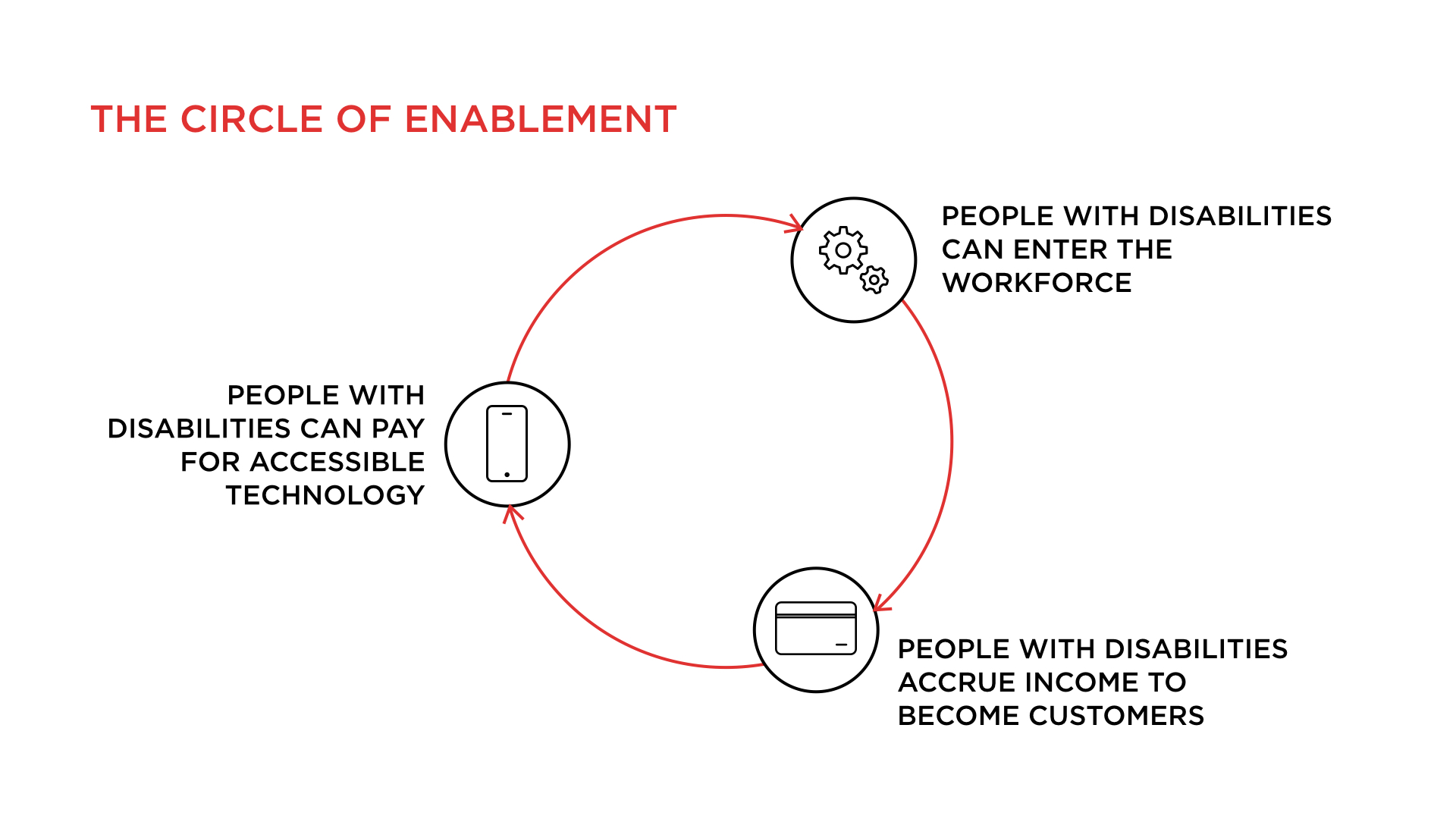Originally publish: https://www.linkedin.com/pulse/follow-inclusion-accessibility-david-dame/?published=t
All succeeding innovative companies are building products and services that are customer-centric. What we might forget is that in today’s world, that includes accessibility. Although people with disabilities do have special needs, their purchase power isn’t special: it’s the same as everyone else’s. No longer can we think of accessibility as a compliance play. It’s simply good business. Let me frame this point with my story.
I was born with cerebral palsy, so I have limited movements in my hands and arms. When I got integrated into regular school in the 80s, I had trouble handwriting. I found the typewriter, which eased burden of writing but was still a physical feat to wrangle as putting paper in it was a struggle—it was two steps forward and one step back. There was still a sizeable gap between what was stuck in my head and what I could put on a page. I struggled. I was frustrated.
Enter the age of the personal computer. Typing was still challenging, but I could edit on screen, and math was much easier with the help of spreadsheets. When technology really started to explode in the late 80s and early 90s, I thought the gap between potential and possible would be eliminated. Then the mouse was released, and as much as it increased desktop productivity for people with full hand mobility, it left me behind. There was all this innovative technology with the power to increase my potential exponentially—but almost none of it was accessible.
Then we hit the early 2000s, when voice recognition changed the game, and accessibility considerations started gaining traction. This initial movement created a wave of enablement, in which people with special needs—myself included—could enter the workforce. Once working, these people with disabilities accrued income to become customers. That means that today, if we build things that customers with special needs can buy and use, they’ll pay for it. This is both a powerful and empowering circle, and one that will only expand in scope in the coming years.

If inclusion and accessibility don’t remain in lockstep with technology, we won’t have products that can meet customers’ needs. We won’t have people with disabilities in the workforce, who add diversity to teams and bring a truckload of grit with them. Instead of two steps forward and one step back, let’s design a world where we can take three steps forward—together. I’m lucky to practice Agile at Scotiabank Digital Factory, where I work with experts who ensure we’re building products and services open to allcustomers.
After all, we’ll all be disabled at some point—I just beat you to it.
